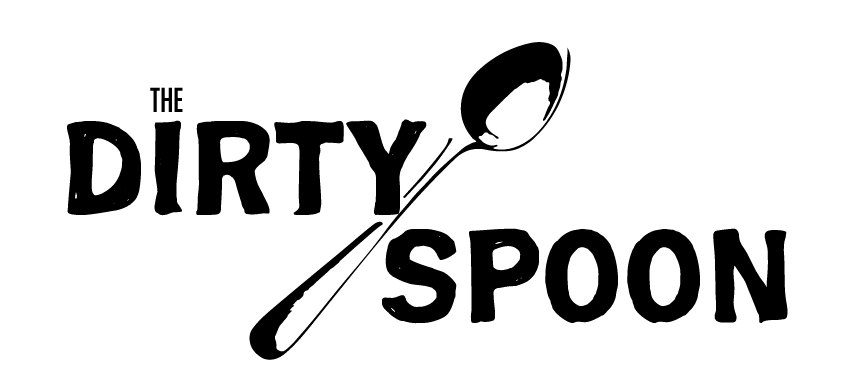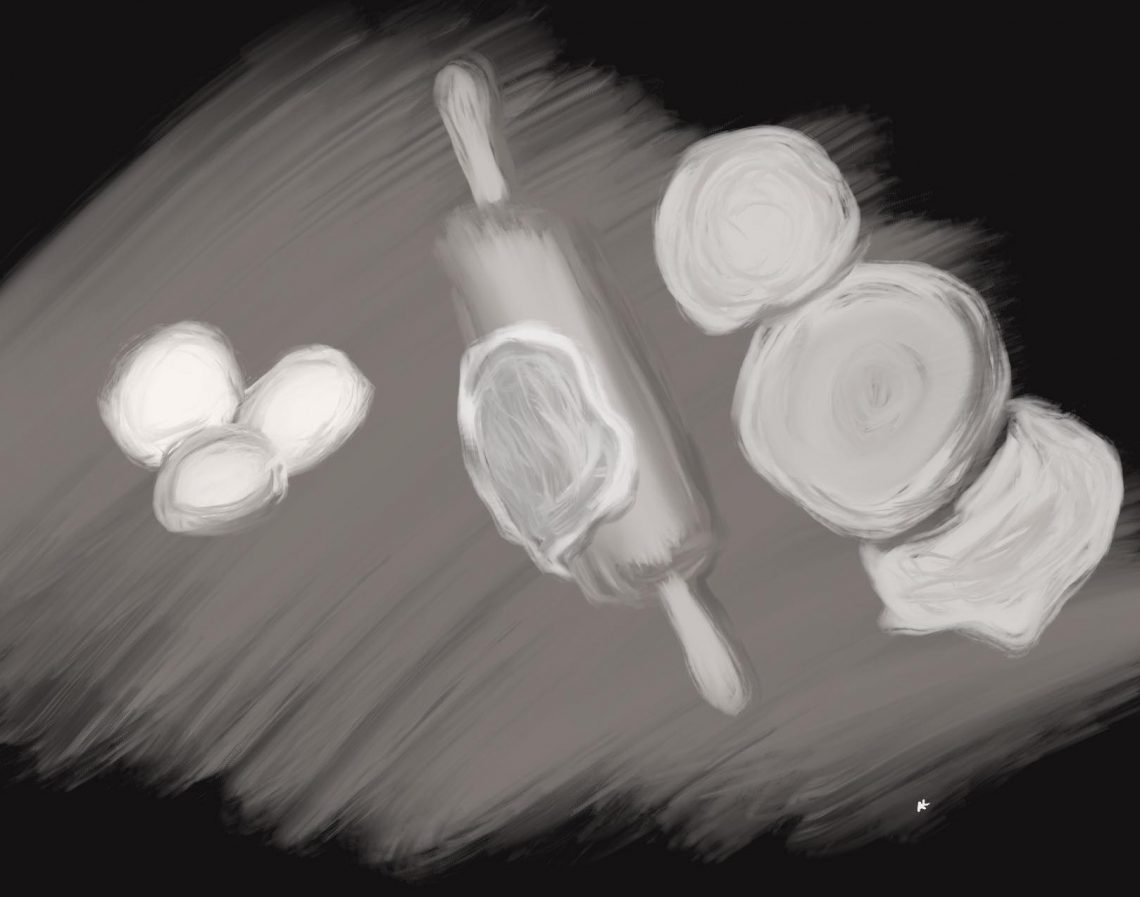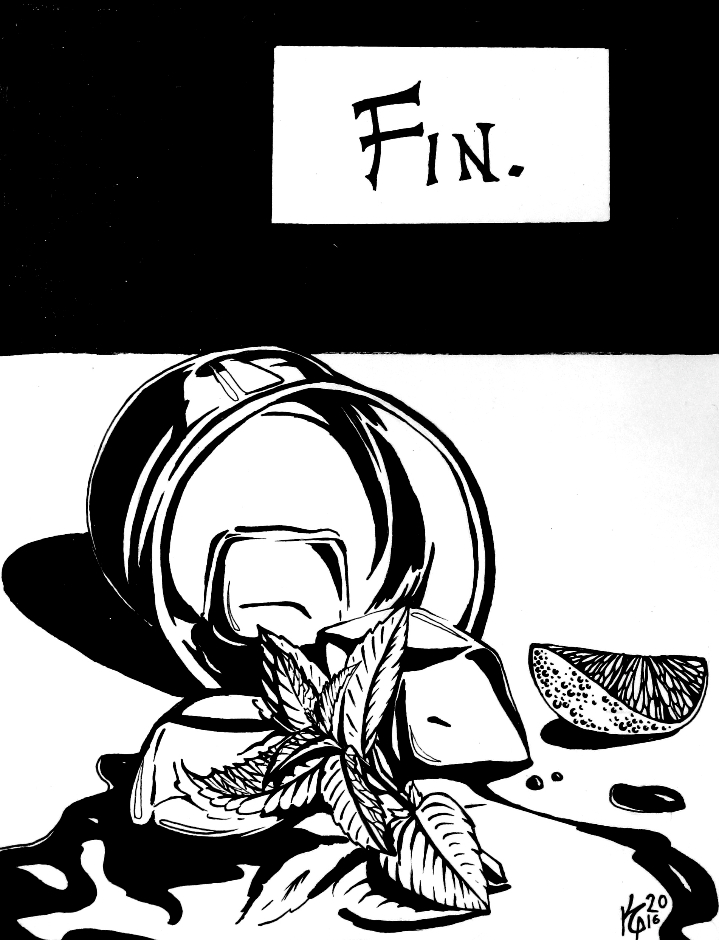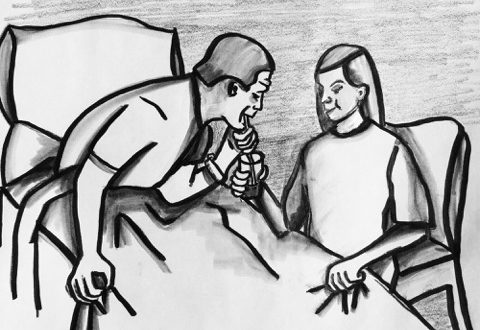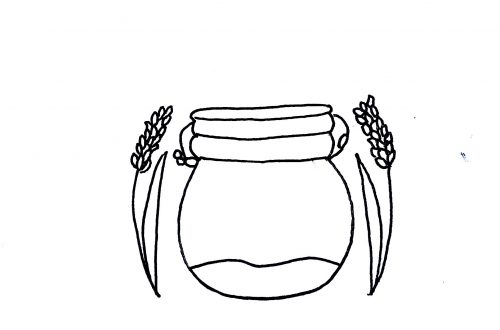by Juanita Mantz
Juanita’s essay is featured in episode 45 of The Dirty Spoon Radio Hour.
I am a half-Mexican and half “white” girl. Growing up, I was never Mexican enough. To white people when they saw my brown skin, curly dark hair, and eyes, I was all Mexican, but to Mexican people, I was clearly more of a white girl. Even my favorite punk song by the LA band X is called “White Girl”.
You see, my first-generation mother did not teach me or my sisters Spanish. My mother had her reasons. She was the only brown face in a sea of whites in her Orange County elementary school picture. As a kid, she had her hands slapped for speaking Spanish in school, and assimilation was what my mother yearned for. So me and my sisters grew up in a household with no Spanish and no tamales. So I was definitely not fitting in with the cholas in my blue-collar neighborhood in Ontario California in the 1970s. But I so wanted to fit in. I wanted to be part of Latina, Chicana culture. And still do.
My mom was definitely more of a Hamburger Helper kind of meal maker when she did cook. You see, in my house, my White Montana-born cowboy father was the cook, not my Mexican mother. My mother did not like to cook, because she never learned how. Sadly, her mom (my immigrant Mexican grandmother who I never met) was sick for most of my mother’s childhood and died when my mother was only fourteen. After her mom died, my mother was devastated and was put in a convent where she rebelled and later dropped out of high school to have her first child David with her first husband. Her son David was born deaf and she was living in Oregon with my father (who she had recently met) when David died in a tragic car accident when he was four, all before me and my two sisters were born.
My mother was a waitress and worked two jobs for most of my childhood and was always tired. My father was raised on stout German and English-style cuisine and taught himself to cook. He really enjoyed it and kept his can of bacon drippings in a coffee can at the side of the stove and it was one of his most treasured possessions. My father would make roast beef, chili, hearty stews, polish sausage, pork chops and he loved to cook us fat, juicy steaks on the barbecue with a homemade mustard and pickle potato salad. He also was a pro at pancakes.
As a kid, I never appreciated all of the hard work it took my father to cook for us after a long day of driving trucks and moving furniture at the Mayflower Moving Company. But as an adult, I remember his cooking with fondness. Yes, his vegetables were often overcooked and his turkey on Thanksgiving was dry, but my father made an effort to feed us well, even on a trucker’s wage. If he had to work late, my mother would make us dinner, and it was usually something easy like sliced fried Farmer John hot dogs with crispy potatoes (don’t knock it because it is actually delicious . We would call them our “weeny pennies and potatoes” and eat them with ketchup). Plus, I was and am a fan of processed food, and my favorite foods during my childhood and teenage years were the boxed ones, such as instant mashed potatoes and Kraft Macaroni and Cheese. I would come home from school with my sisters and make a pot of the yellow macaroni adding extra butter and that would be our snack. I would add lots of black pepper and me and my sisters would eat the macaroni and cheese while watching the series CHIPS.
In a repetition of history, in my household, I am not the cook, and instead, my dentist-by-day husband Adrian is the master chef. His Argentine heritage serves him well and he learned how to cook partly by watching his mother. His mom Orieta lives with us and she is almost ninety years old and obviously, she cannot cook like she used to. Yet, I still remember the good old days of going to Adrian’s parent’s house in the 1990s in West Covina, California for dinner parties. His mom would spend the entire day over the stove and would cook delicious feasts for a crowd of twenty of their friends: homemade chicken Milanese with a fried egg on top, cheese ravioli, and a side of onion and tomato salad and what the Argentines call Russian potato salad.
Orieta always had an innate sense of style and grace and would be dressed to the nines and she would set the table with her fancy plates and shiny crystal glasses. I would feel a bit out of place because I was raised drinking out of a McDonald’s Hamburglar glass and eating on paper plates while wearing old jeans and a tee shirt.
Because of his culinary pedigree passed down from his mother, Adrian is what I call a natural chef. The guy can cook. Sometimes, I literally moan while eating his homemade creations such as roast chicken, smoked baby back ribs, and his own variation on his mom’s crispy chicken Milanese, one with cheese and ham on top. Adrian buys specialty foods and makes homemade salsas and creative culinary creations that rival his mother’s, only with more flair. He smokes his meats and recently started growing a window box garden for fresh produce and peppers.
And let’s just say that it is an understatement to say that I am not a natural cook. I have little or no patience and do not have great coordination and have to squint to read recipes (even with my readers). I would much rather be reading a book or writing a story than standing over a stove. The truth is, I am almost a horrible cook. I routinely undercook chicken and overcook pork and I am especially bad at Mexican food because I have no idea how to make tamales and I use canned Enchilada sauce when I do make enchiladas (which is not often). My saving grace, and the only reason I am not a horrible cook, is my breakfast-making skills. Because of my father’s tutoring, I can make a delicious crispy pancake and a mean fried egg.
Plus, I just love breakfasts and diner food. After high school, my sister Annie and I worked at a coffee shop in Upland, California called Benji’s (after the dog I think). It could be another reason why I am not a big fan of cooking having worked in the restaurant industry for years after high school before I finished college and law school. I liked waitressing, but I hated going home smelling like food. And the uniforms, que fea! At the coffee shop, our uniforms consisted of peach skirts and light green polos with a forest green apron with the coffee shop’s name stenciled in white which matched our ugly white waitressing shoes, shoes that were not only hideously expensive and heinous looking, but were mandatory for the non-skid soles. We called them our “white witch” shoes.
Working the graveyard shifts at the coffee shop was fun at times. I loved the way you had to yell out the orders, my favorite was always the term “shit on a shingle” which stood in for hash and eggs. On graveyard, we served all the kids, who we called the “club rats”, who loved to order sundaes and milkshakes that we had to make by hand. Just scooping the ice cream out of the over-frozen bins was exhausting. Then you had to add milk and whip the shakes in tall cylinders using a big silver machine and then we had to finish them off by pouring them in a long old-fashioned shake cup and neatly adding whipped cream and a cherry.
Banana splits were the worst. Plus, an order of milkshakes and sundaes could take fifteen minutes or more. When you had a full station, there was no time for handmade milkshakes and pretty sundaes. Plus the club rats never appreciated the hard work it took and usually only left a dollar or two. I started telling the club rats, some of whom wore ridiculous silver and gold Lamé outfits, that the mixer was broken to avoid the “shake earthquake” which was what I nicknamed an order of milkshakes that could put you in the waitressing weeds.
I often worked the graveyard shift with a sarcastic Puerto Rican girl named Diane, a girl we became fast friends with. She was a blond Puerto Rican and had a huge yellow head of hair, sprayed up with Aqua Net like a lion’s mane, and she was smart and funny and wasn’t scared of anyone. Diane told me in her thick New York accent that the trick to the coffee shop was to get the manager Paul to move you to the breakfast shift where if you worked the smoking section you could make 100 bucks a shift serving all the old white rich men that came in and tipped their waitresses large, sometimes leaving five bucks on a single cup of coffee. (Diane couldn’t work breakfasts because she had a husband who worked days and two kids in school and plus, she had her late-night regulars and she always got off first, often starting during the dinner shift to make up for the shit graveyard tips.)
The tables and management liked my fast service and good memory and I got moved to the breakfast shift quickly. I was always good at multitasking. I loved putting all the plates on my arms. My sister somehow got moved to lunches which were less profitable, but we would share our shifts, that way we made about the same, trading with each other to make it fair. Back then in the early 1990s, the restaurant industry was especially tough, and the owners never gave us our legally required breaks and made us work the dreaded split shift which we called the “screw you over shift” where you worked a lunch and took a long break and then worked a dinner shift.
Food was always a luxury for us in our twenties and all Annie and I had in our apartment fridge was a loaf of bread, some fruit, salsa, and white rice. We ate salsa and rice for dinner most nights when we weren’t working. As a special treat, we would go to Carrow’s to eat their special two-dollar breakfast one day a week and we would down their mugs of coffee and always tipped a fiver. But when on shift, the line cooks would usually slip me a leftover chicken finger and some fries if they knew we were hungry, which was often because we were always hungry preferring to spend our money on an outfit for club night or for alcohol to drink in the car at the club. And as a backup, there was always the burnt toast which they “allowed” us to have. Sometimes, I would burn it on purpose (a girl’s gotta eat). As an aside, to this day, I love me some over-toasted “burnt” toast drenched with butter. At the restaurant we’d slather it on with a barbecue brush dipped in cheap margarine.
Once, and this is embarrassing to admit, I even committed the cardinal restaurant sin of taking home abandoned food. I couldn’t resist because I was hungover and famished and it was a huge roast chicken dinner that the table barely picked at. I lied and told everyone that I was taking it home for my nonexistent cat, but I gnawed the bones clean that night.
Back to my tortilla-making experiment. It all started because the only thing that I knew I could cook better than Adrian was homemade beans. It’s because they’re so easy and I can leave them on a stove. I was bragging about my beans one day when Adrian suggested that I try to make homemade tortillas to go with my beans. At first, I hesitated but then thought, why not? How hard could it be?
Knowing my mother had no idea how to make homemade tortillas, I started researching recipes on the internet. I found a recipe for the dough and collected the ingredients. It said to have the true homemade flavor, you should use lard. Lard! As in Crisco?
Where would I get lard? I decided the Mexican market would surely have it and they did. After coming home from the market, I made the dough right after starting my beans. The trick to my beans is soaking them for at least a few hours and preferably multiple hours, and I had placed them in a bowl of water the night before. After rinsing out my pinto beans, I put them in a boiling pot of water with powdered garlic, bay leaf, and crushed fresh garlic, along with pieces of red onion and a piece of both raw bacon and jalapeño for flavor.
Back to the tortillas, I combined the 2 tablespoons of lard, with 2 teaspoons of baking powder and 1 teaspoon of salt along with four cups of flour and a cup and a half of water. I kneaded the dough and rolled the dough into small balls and let them rest. It all seemed to be going okay until I started trying to roll them out. The dough kept sticking to the rolling pin. The video said nothing about this. Maybe it was too warm in the kitchen. Getting frustrated, and remembering why cooking was so difficult for me, I put the dough back in one big piece and re kneaded and rolled out the balls again. Sweat dripped down my face as I put them in the fridge. I decided to put flour on the island to help control the stickiness, and then I waited for the tortilla balls to cool while listening to some David Bowie for inspiration. After thirty minutes, I rolled out the cool dough but noticed that the dough wasn’t thin enough and had a thick almost spongy quality. Plus, I was covered in flour as I had put too much flour on the island. Feeling a little bit like Lucille Ball, I made a face and let out a “wahhhhh”.
Not giving up, and trying to stay positive, I kept rolling. When I finished, I noticed my tortillas were misshapen. They kind of looked like pita bread, not tortillas. But I cooked them anyway and got them nice and crispy. It almost reminded me of making pancakes. But when I tasted one, I noted that the tortillas didn’t just look like pita bread, they tasted like pita bread too. When Adrian got home, he laughed aloud when he saw my sad attempt at tortillas, but he tried to be nice while agreeing that they had an odd texture. And he had the nerve to say in his chef voice that I probably should have used a tortilla press. Fed up, I just grunted at him as I threw the tortillas in the trash and warmed up my beans which were perfectly cooked and I added butter like all white girls should.
That was my one and only time making homemade flour tortillas. Adrian bought me a tortilla press as a gift but I told him it was just too much pressure, pun intended, and that I would prefer to buy my tortillas “homemade” at the Mexican Northgate market and that I might write a story about it instead.
So I did.
Original artwork by Alex Knighten
About the Author
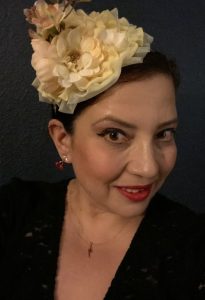 Juanita E. Mantz (“JEM”) is a writer, performer, and USC-educated lawyer/deputy public defender. Her stories have been published in literary journals, newspapers, and magazines including The Acentos Review, Aljazeera, As/Us, Entropy, Mutha, Muse, The San Bernardino-Singing (anthology), The Riverside Press Enterprise, amongst others.
Juanita E. Mantz (“JEM”) is a writer, performer, and USC-educated lawyer/deputy public defender. Her stories have been published in literary journals, newspapers, and magazines including The Acentos Review, Aljazeera, As/Us, Entropy, Mutha, Muse, The San Bernardino-Singing (anthology), The Riverside Press Enterprise, amongst others.
JEM is an alumnus of the VONA Writing Workshops and is an alum of the Macondo Writers Workshop for writers striving to change the world. She has a memoir about her young adult years: “Tales of an Inland Empire Girl” and an International Latino Book Awards gold medal-winning chapbook titled “Portrait of a Deputy Public Defender or How I became a Punk Rock Lawyer”.
